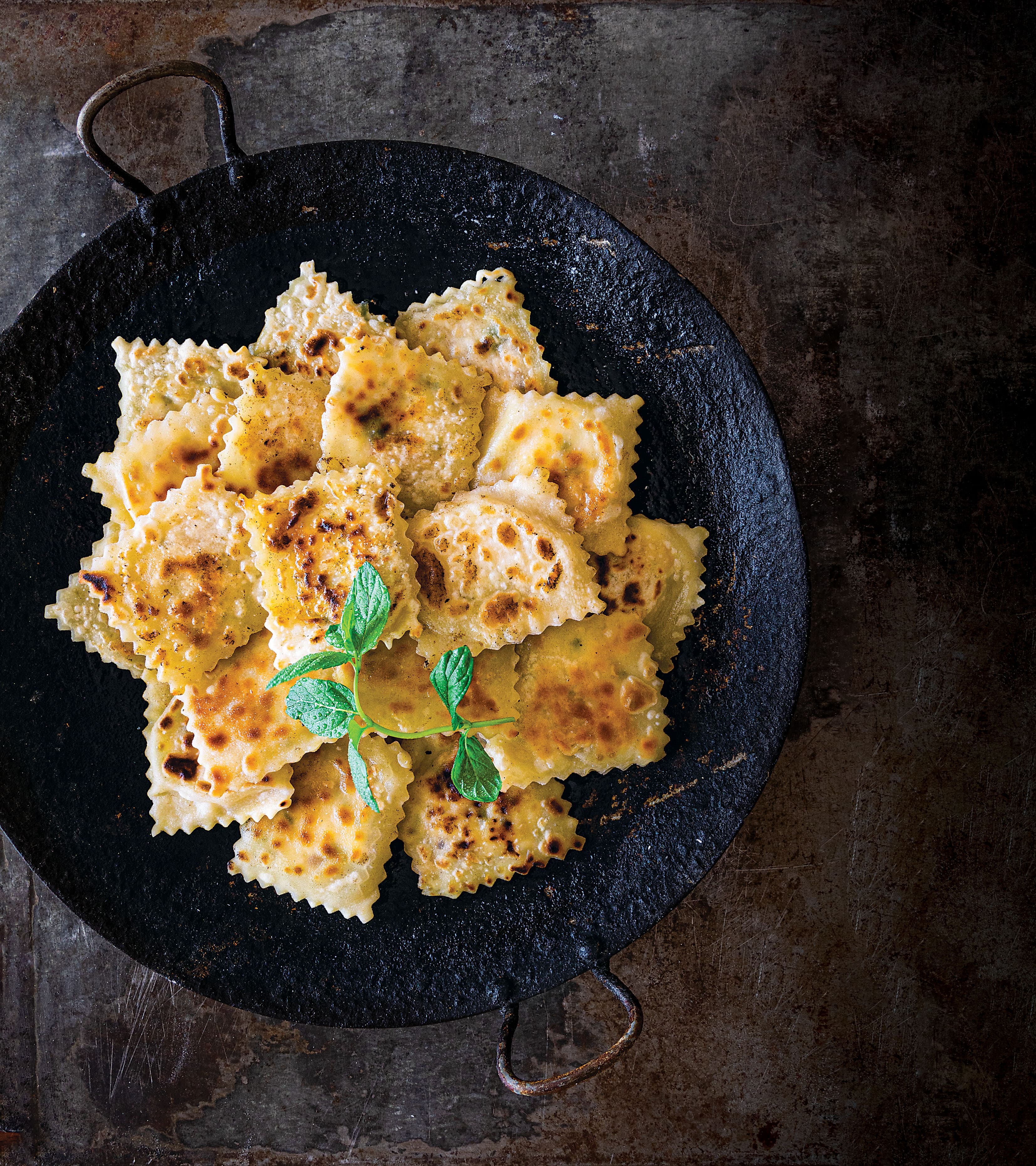2000, Cheesefare Week, Lefkara. The sun is about to set, and my mother and I are walking uphill to the sheepfold of her sister, my Aunt Eleni. We find her at the kitchen table arranging the halloumi and anari cheese she made that morning. As soon as she sees us, she starts making dough. My job is to grate the halloumi. Half an hour later, I’m savoring her freshly made pourekia on the saj, my beloved aunt’s signature. The fresh halloumi made from goat and sheep milk is wonderfully fragrant, as is the mint she just picked from the yard. Her secret ingredient: excellent-quality products combined with caramelized onions in the filling, which give a sweet and unique flavor.

NOTES FROM CYPRUS GASTRONOMY The word sajji (σάτζιη) comes from the Proto-Turkic sac, meaning “metal sheet.” In culinary tradition, it refers to a convex metal griddle placed directly over fire, used to cook flatbreads and pies without oil. In the Kyrenia district, pourekia tis sajjis are also known as hellimboureï or hellimbouri — from the Turkish hellim börek, meaning “pie with halloumi.”